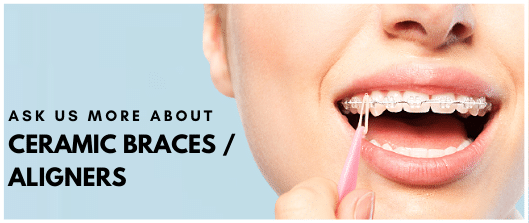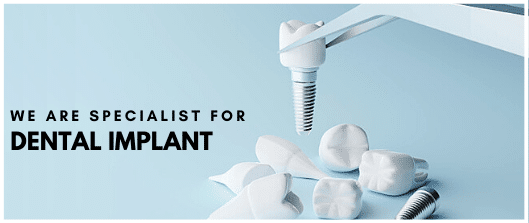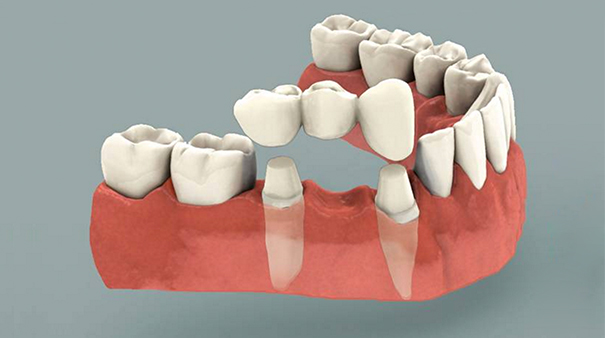
A dental crown or dental cap is a custom made restoration that covers a tooth with sustained significant loss of structure.Dental crowns are used to restore teeth to a certain shape and size. They provide strength and improves the appearance of the tooth.
Benefits of Dental Crowns
- Protects severely damaged tooth or tooth weakened by decay, fracture, large fillings or root canal therapy from fracturing. Teeth with large fillings tend to “flex more” forcing the tooth apart possibily causing stress fractures
- Holds together cracked or weaken teeth and seal the tooth from decay
- Covers discolored and irregularities in teeth in improving cosmetic appearance
- Helps preserve the natural function and position of the teeth
- Restores tooth with large decay, cavities or filings
- Supports the replacement teeth in a bridge
- Restores and maintains natural bite
- Covers a dental implant
- Restore your smile
Types of Dental Crowns
There are three basic types of materials for dental crowns:
- Porcelain fused to metal (PFM) dental crowns
- All porcelain dental crowns All metal dental crowns (Gold)
- Full ceramic crowns
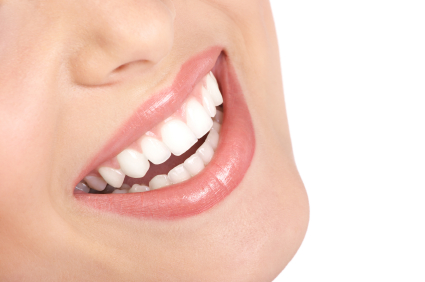
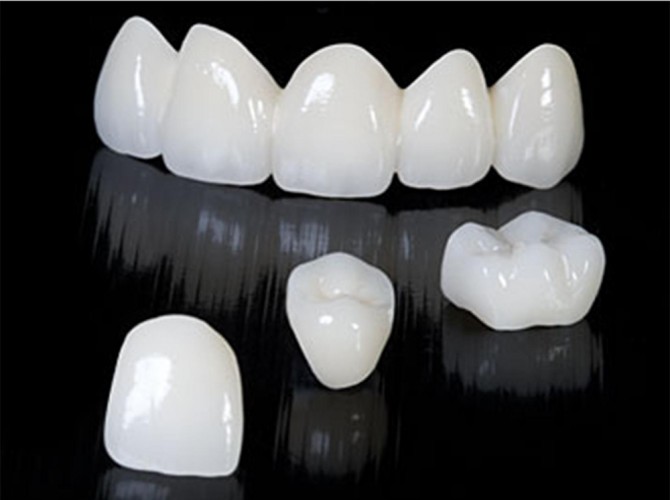
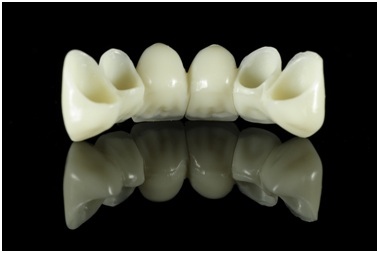
Porcelain fused to metal (PFM) dental crowns and all porcelain crowns are tooth colored crowns. PFM dental crowns offer the best combination of aesthetics and durability. PFM dental crowns are usually used to restore back teeth where the forces of chewing and grinding are strongest. All porcelain crowns are the most aesthetic and are used primarily used for front teeth.
The all-ceramic porcelain crowns include the IPS Empress Esthetics crowns from Ivoclar Vivadent and Procera NobelEsthetics from Nobel Biocare.
Procedure for Dental Crown Treatment
1. First evaluation and crowns tooth preparation
- Local anesthesia is first adminstered at the region for crown tooth preparation
- The natural tooth is reshaped to receive the new dental crown
- Records are taken and approved with the patient to determine the color, bite, length and shape of the crown
- An impressionis taken for a replica model of the teeth
- This model is sent to a lab where the individual personal crown is fabricated
- A temporary crown is placed on whilst the permanent crown is made
2. Fitting of crowns on delivery
- The temporary crown is removed
- The permanent crown is fitted and cemented into place on the teeth
- A quality assurance check is done for any re-adjustments or re-works of the dental crowns
3. Care of crowns
- Brush and floss the crowns as recommended by your dentist or dental hygienist.
Recovery Expectations
Both the preparation and placement of the temporary bridge as well as the bonding of the permanent bridge may cause some minor tenderness in the area. Some individuals may experience sensitivity in teeth. This sensitivity will disappear gradually over a few days to weeks.
Post care Instructions for Dental Crowns
- Avoid chewing on or eating hard foods on the restorations for 24 hours from the time they were cemented
- To help with discomfort or swelling rinse your mouth 3xd with warm salt water. (1tsp. of salt in 8oz of water)
- Keep crown area clean to maintain tissue compatibility (the contour of the prosthesis must allow the surrounding tissue to conform to a natural, healthy position)
- Some sensitivity in teeth may be experienced by certain patients. This sensitivity will disappear gradually over a few days to weeks. If teeth are sensitive
- Avoid hot, cold or acidic food and beverages
- Pain medication be taken as directed as long as there is no medical contradiction based upon your medical history
- Use flouride rinse and toothpaste for sensivity teeth
- Clean teeth properly
Bridges-Fixed Partial Dentures (FPD)
A dental bridge is one method to fill a gap created by a missing tooth (or teeth). Dental bridge or pontic is a custom-made false tooth or teeth, that is permanently placed between two healthy teeth, filling in the area left by a missing tooth or teeth. The bridge is held in place by crowns placed on the healthy teeth on each side of space to be filled.
Benefits of Dental Bridges
- Restores your smile
- Restores your ability to properly chew and speak
- Maintains the shape of your face
- Distributes the forces in your bite properly by replacing missing teeth
- Prevents remaining teeth from drifting out of position
- Helps preserve the natural function and position of the teeth
- Restores and maintains natural bite
Types of Dental Bridges
Traditional bridges
Traditional bridges involve creating a crown for the tooth or implant on either side of the missing tooth, with a pontic in between. Traditional bridges are the most common type of bridge.
Cantilever bridges
Cantilever bridges are usually used when there are adjacent teeth on only one side of the missing tooth or teeth.
Maryland bridges
Marlyland bridges also called a resin-bonded bridges or a Maryland bonded bridges. Maryland bridges supported by a metal framework. Metal wings on each side of the bridge are bonded to the back of existing teeth.
Types of Dental Bridge Materials
There are three basic types of materials for dental bridges:
- Porcelain fused to metal dental bridges
- All porcelain dental bridges
- All metal dental bridges
The all porcelain dental bridges and porcelain fused to metal (PFM) dental bridges are tooth colored bridges. PFM dental bridges are usually used to restore back teeth where the forces of chewing and grinding are strongest. All porcelain dental bridges are the most aesthetic and are used almost exclusively for front teeth where the need for strength is not as critical.
**Post care Instructions for Dental Bridges-please refer to setion of downloads

